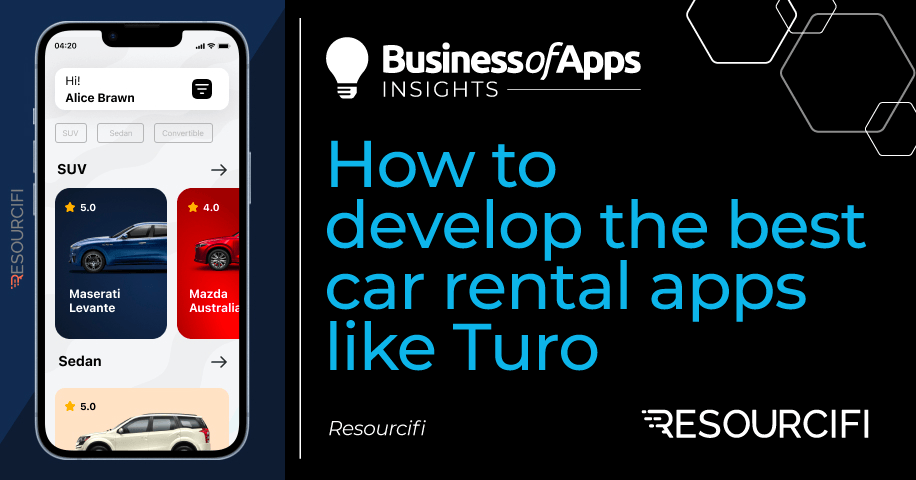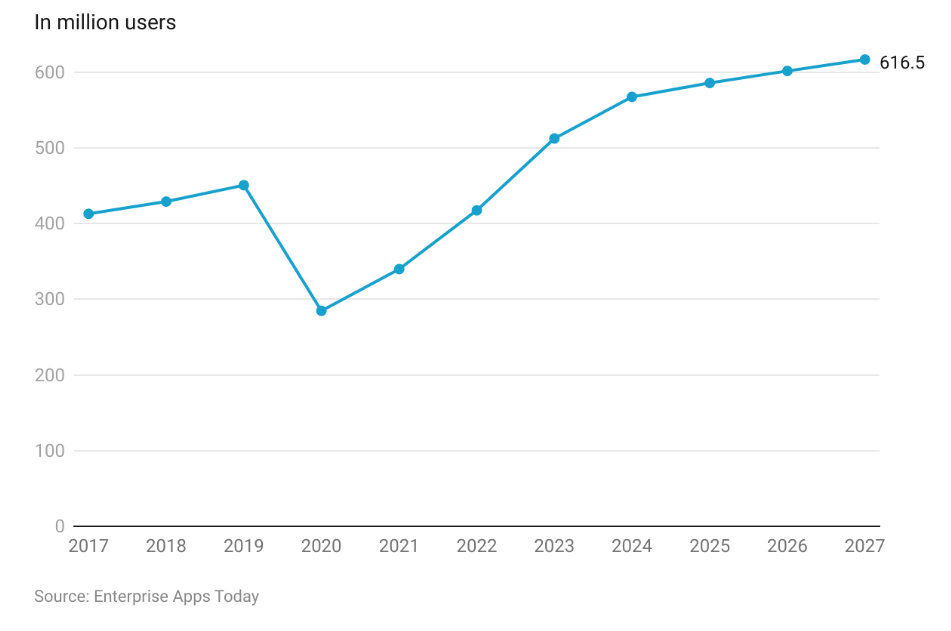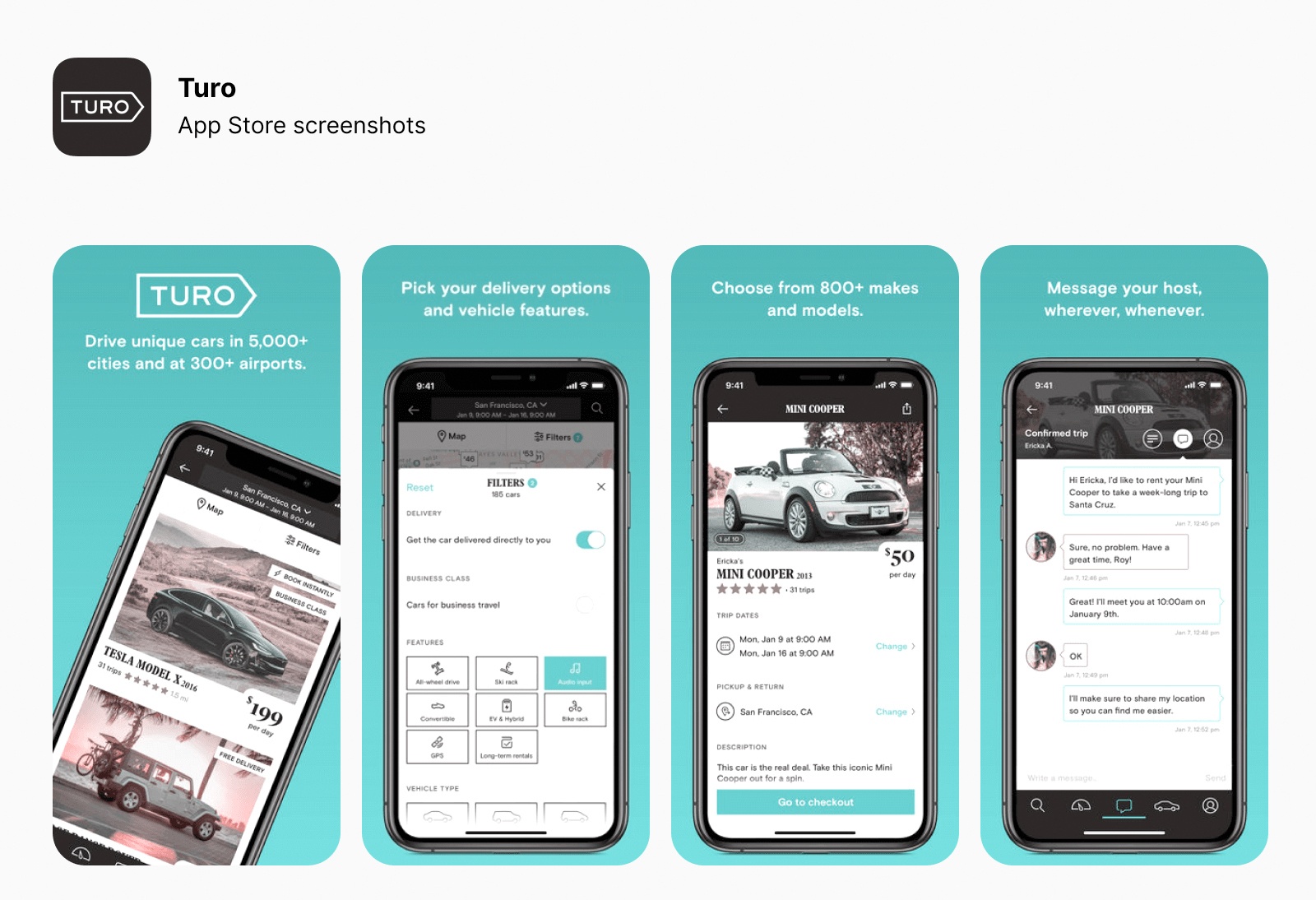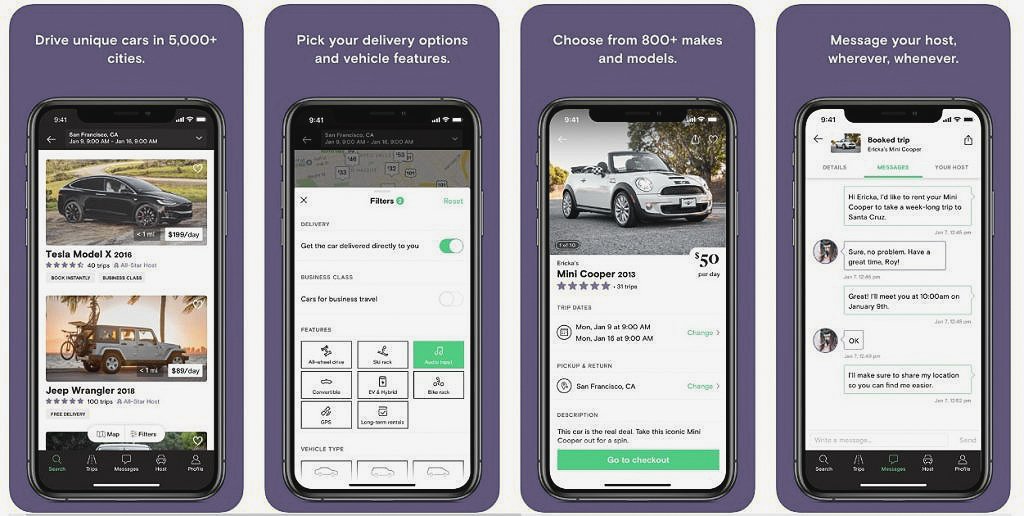Car rental services have become increasingly popular in recent years, providing individuals with a convenient and cost-effective way to access transportation for their daily needs or travel. This blog will help you in understanding how you can develop the best car rental apps.
Among the many car rental companies, car rental apps like Turo are one of the most renowned and respected brands in the industry. Before we dive deeper into how we can develop the best car rental apps, here are a few statistics you must consider:
- The car rental statistics say that the market in Asia is expected to gain an overall 348.9 million users by the year 2027.
- By the year 2026, the expected number of car rental users is 602.2 million.
- United States of America accounts for nearly 50% of the car rental industry every year.
- The overall number of users in the American market will rise to 108.50 million by the year 2027.
Car rental users
Source: Enterprise Apps Today
If you’re looking to develop a car rental app like Turo, you’re in the right place! In this article, we will explore the key steps and considerations to develop a successful car rental app, with a focus on the best car rental apps in the mobile app development market.
Why develop a car rental app?
Car rental apps like Turo have gained significant traction due to the convenience and flexibility they offer. They allow users to rent a car for a short or long-term period, providing access to a vehicle without the need for ownership or maintenance responsibilities.
With the rise of the sharing economy and the increasing popularity of travel and tourism, car rental apps like Turo have become a preferred choice for many individuals and businesses alike.
Moreover, the best car rental apps have opened up new opportunities for entrepreneurs and businesses to enter the lucrative car rental market. By developing apps for rental cars, you can tap into this growing demand and create a profitable business model. However, it’s crucial to understand the complexities and considerations involved in developing the best car rental apps to ensure their success.
Turo app (1)
Source: Resourcifi
Key features of car rental apps
Before diving into the development process, it’s important to understand the key features that make up successful and best car rental apps. These features are crucial to providing an exceptional user experience and differentiating your app from the competition. Let’s take a look at the essential features to develop the best car rental apps:
Registration and user profiles: Users should be able to easily register and create a profile within the app. The registration process should be simple, and secure, and may include options for social media login or email signup. User profiles should store relevant information such as contact details, payment preferences, and rental history.
Vehicle listings and booking: The app should allow users to browse through a wide range of vehicles available for rent, with detailed information on each vehicle including its specifications, availability, and pricing.
Users should be able to search for vehicles based on location, type, and other filters. The booking process should be seamless and allow users to select a vehicle, specify the rental period, and make payments.
Payment integration: The best rental car apps should support secure and convenient payment options, including credit/debit cards, e-wallets, or other popular payment gateways. It’s essential to ensure that the payment process is secure and compliant with industry standards to protect user data and build trust.
Vehicle tracking: Integrating GPS tracking functionality into the app allows users to track the location of the rented vehicle, ensuring safety and security. It also helps the car rental company to monitor and manage the rented vehicles efficiently.
Rental policies and insurance: The best rental car apps should clearly outline the rental policies, including terms and conditions, cancellation policies, and insurance coverage. It’s crucial to provide transparent and comprehensive information to users to avoid any confusion or disputes later.
Reviews and ratings: Incorporating a review and rating system allows users to provide feedback on their rental experience and helps other users make informed decisions. It also helps car rental companies to maintain quality standards and improve their services based on customer feedback.
Customer support: Offering reliable customer support through the app, such as chat or call options, helps users resolve issues or seek assistance in real time. Prompt and efficient customer support is crucial to ensuring a positive user experience and building customer loyalty.
Admin panel: A robust and feature-rich admin panel is essential for managing and monitoring car rental operations, including vehicle inventory, bookings, payments, and user profiles. It provides car rental companies with the necessary tools to manage their business efficiently.
Now that we have a clear understanding of the key features of the best rental car apps, let’s dive into the steps involved in developing a car rental app like Turo.
Define your business model and target audience
The first step in developing the best rental car apps is to define your business model and identify your target audience. Understanding your target audience and their needs will help you tailor your app to meet their specific requirements.
You need to decide whether you want to focus on a particular niche or offer a general car rental service. Consider factors such as vehicle types, rental periods, pricing models, and target locations. Conduct market research to identify your competition and analyze its strengths and weaknesses to differentiate your app from the rest.
Choose the right platform
The next step is to choose the right platform for the best rental car apps. You can opt for either a native app or a cross-platform app, depending on your budget and requirements. Native apps are built specifically for a particular platform, such as iOS or Android, and provide a seamless user experience with optimized performance.
Cross-platform apps, on the other hand, are built using frameworks such as React Native or Flutter and can run on multiple platforms with a single codebase, saving development time and effort.
Design the user interface and user experience
The user interface (UI) and user experience (UX) are critical aspects of any app development process, as they determine how users interact with your app. Design a visually appealing and intuitive UI that allows users to easily navigate through the app and complete tasks such as vehicle browsing, booking, and payments.
Ensure that the design is responsive and adapts to different screen sizes and devices. Pay attention to the UX, ensuring that the app is easy to use, efficient, and provides a seamless experience from start to finish.
Develop the frontend and backend
The front-end development involves building the user interface of the best rental car apps, including the screens, buttons, forms, and other visual elements. This is where users interact with your app, so it’s crucial to ensure that it’s visually appealing, user-friendly, and responsive.
The back-end development involves building the server-side logic that powers your app, including the database, APIs, and other server-side functionalities. This is the backbone of your app that handles user data, bookings, payments, and other functionalities. Choose the right technology stack for your app, such as Node.js, Ruby on Rails, or PHP, depending on your requirements and expertise.
Integrate payment gateways
Integrating secure and reliable payment gateways is a crucial step in developing a car rental app like Turo. Users should be able to make payments for their bookings securely and conveniently. Choose popular payment gateways such as Stripe, PayPal, or Braintree, and ensure that the payment process is secure, encrypted, and compliant with industry standards.
Implement vehicle tracking and booking management
Vehicle tracking is an essential feature of all the best rental car apps that allow users to track the location of their rented vehicle and ensures its safety and security. Implement GPS tracking functionality that provides real-time location updates of the rented vehicles to users and the car rental company.
Turo app (2)
Source: Resourcifi
Additionally, implement booking management functionality that allows users to view their booking history, modify bookings, and cancel bookings if needed.
Implement rental policies and insurance
Clearly outline the rental policies, terms and conditions, cancellation policies, and insurance coverage in your car rental app like Turo. Users should be aware of the rules and regulations associated with renting a vehicle and understand their responsibilities.
Implement a system that allows users to accept the rental policies and provide necessary documentation such as driving license and insurance information.
Incorporate reviews and ratings
Implement a review and rating system in the best rental car apps that allow users to provide feedback on their rental experience. Reviews and ratings help other users make informed decisions and build trust in your app.
Users should be able to leave reviews and ratings for the vehicles they rented, the overall experience, and the service provided by the car rental company. This will also help you gather valuable feedback to improve your app and services in the future.
Implement customer support and communication channels
Customer support is a crucial aspect of any service-oriented app, including the best rental car apps that implement customer support functionality that allows users to contact the car rental company for any queries, issues, or emergencies.
Provide multiple communication channels such as phone, email, chat, or in-app messaging for users to reach out to the customer support team for your best car rental apps. Ensure that the response time is prompt and the support team is well-trained to handle customer inquiries efficiently.
Ensure security and privacy
Security and privacy are paramount in any app that deals with user data, payments, and personal information. Implement industry-standard security measures such as SSL encryption, two-factor authentication, and data encryption to protect user data from unauthorized access or data breaches. Comply with privacy regulations such as GDPR, CCPA, and other applicable laws to ensure user privacy and build trust in your app.
Perform rigorous testing
Thorough testing is crucial to ensure that your car rental app is bug-free, functions smoothly and provides a seamless user experience. Conduct extensive testing of all functionalities, including vehicle browsing, booking, payments, tracking, and customer support. Test the app on different devices, operating systems, and network conditions to identify and fix any issues before launching the best rental car apps to the public.
Launch and promote your app
Once your car rental app is thoroughly tested and refined, it’s time to launch it to the public. Publish your best rental car apps on the app stores such as Apple App Store and Google Play Store, and promote it through various marketing channels such as social media, content marketing, email marketing, and paid advertisements.
Utilize search engine optimization (SEO) techniques to optimize your app’s visibility in search results and attract organic traffic.
Gather feedback and iterate
After launching your app, gather feedback from users, analyze user behavior, and collect data on app performance. Utilize analytics tools to track user engagement, conversion rates, and other key metrics. Listen to user feedback and iterate on your app to continually improve the user experience, add new features, and address any issues or concerns.
Conclusion
In conclusion, developing a car rental app like Turo requires careful planning, thorough development, and continuous improvement. Define your business model, target audience, and unique selling proposition.
Choose the right platform, design an intuitive UI/UX, and implement essential features such as vehicle tracking, booking management, payment gateways, rental policies, and customer support.
Ensure security and privacy, perform rigorous testing and promote the best rental car apps effectively. Gather feedback, analyze data, and iterate on your apps for rental cars to provide the best car rental experience for your users. With proper execution and attention to detail, you can develop a successful car rental app that competes with the best rental car apps in the market.













